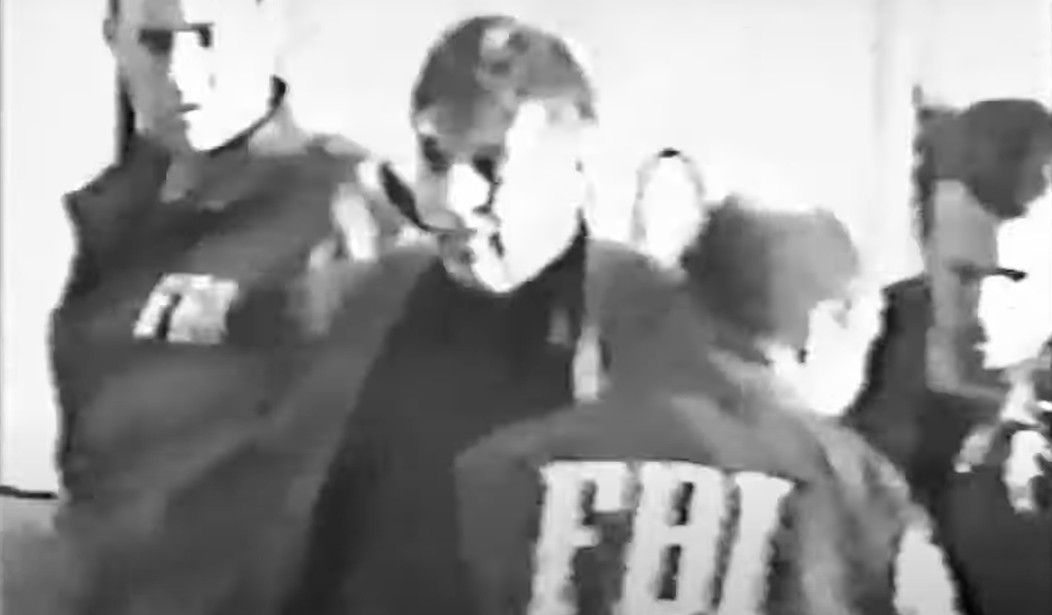The true story of Robert Hanssen's treachery is the stuff of a John le Carre novel: A senior FBI official and counterintelligence specialist who was, himself, an exceptionally damaging Russian mole. Hanssen spied for Moscow for decades until he was finally brought down in 2001. He'd been rotting away in a 'supermax' ever since until he died this week at the age of 79, reportedly of natural causes. Given the harm he inflicted upon America's interests, many would argue he remained alive to draw far more breaths than he deserved. Nearly everyone familiar with his exploits agree that he was one of the most damaging spies in US history.
The New York Times summarizes the scope of his betrayal:
Hanssen’s case was considered one of the most notorious spy scandals of his generation, shocking F.B.I. leaders and other government officials when they learned that one of their own had been feeding information to the other side with impunity for so many years. To this day, the F.B.I. describes him as “the most damaging spy in bureau history.” In exchange for $1.4 million in cash, bank funds and diamonds, Mr. Hanssen passed along a torrent of secrets to Moscow, including one disclosing that the United States government had dug a tunnel underneath the Soviet embassy in Washington to eavesdrop on diplomatic and other communications. He also informed Moscow about three K.G.B. officers who were secretly spying for the United States, two of whom were later executed.
...“The magnitude of Hanssen’s crimes cannot be overstated,” Paul J. McNulty, who was the U.S. attorney who prosecuted him, said on Monday in response to reports of his death. “They will long be remembered as being among the most egregious betrayals of trust in U.S. history. It was both a low point and an investigative success for the FBI.”...Mr. Hanssen joined the F.B.I. in 1976 as a special agent and went on to hold several counterintelligence positions that gave him access to classified information. He began spying for the Soviet Union three years after joining the bureau, when he was assigned to a counterintelligence unit in New York, by walking into the New York offices of Amtorg, a Soviet trade organization that was known to be a front for the Soviet military intelligence agency.
According to the account, Hanssen took two hiatuses from his spying -- once in the 80's, and again after the Soviet Union collapsed -- but resumed his work on behalf of America's enemies once things settled down. He was eventually ensnared in the wake of US officials catching CIA traitor Aldrich Ames and realizing another high-level traitor was still feeding extremely sensitive information to Moscow:
In the 1990s, after the arrest of Aldrich Ames, a C.I.A. agent who had also spied for the Russians, the F.B.I. and the C.I.A. realized that someone else was still providing Russia with classified information, and they began “Graysuit,” a hunt for the unknown double agent. But it was not until 2000 that investigators were able to narrow the search, when the F.B.I. paid $7 million to a former Russian intelligence officer for a file on the anonymous mole who called himself B — a file that included an audio recording with a voice that two F.B.I. analysts who knew Mr. Hanssen eventually recognized. Using fingerprints, the F.B.I. confirmed that the mole was Mr. Hanssen and surveilled him for months, even promoting him to keep better track of him.
That's when the Bureau finally made its move, catching Hanssen red-handed:
The #FBI knew by the 1990s that there was a Soviet “mole.” In 2000, information from a Russian source helped them zero in on Hanssen. After months of investigation, agents arrested #RobertHanssen 10 minutes after he placed a dead drop in Foxstone Park in Virginia. 🗣️Eric O’Neill… pic.twitter.com/h0DBJd1tII
— The Spy Museum (@IntlSpyMuseum) June 5, 2023
As agents swarmed him, finally putting an end to his clandestine work on behalf of the Russians, Hanssen (alias: Ramon Garcia) reportedly asked, "what took you so long?" The man featured in the clip above is named Eric O'Neill. He was assigned by mole-hunters to be Hanssen's new assistant, for the purpose to helping trap the culprit. His job was to spy on the suspected spy. O'Neill was portrayed by actor Ryan Phillippe in the 2007 film, Breach, which dramatized the unraveling of Hanssen, played by Chris Cooper. After being taken into custody, Hanssen was tried, convicted, and sentenced to 15 consecutive life sentences, with no possibility for parole. This week, he was found unresponsive in his Colorado prison cell, and pronounced dead shortly thereafter.
Recommended
In the espionage world, the acronym 'MICE' lists the motives associated with betraying one's own country: Money, Ideology, Coercion, and Ego. Hanssen was not a Communist and was devoutly Catholic, so this wasn't an ideological crusade against the United States or capitalism. As noted above, he wasn't blackmailed or extorted into treason, either; he waltzed into the Kremlin's open arms of his own volition. It is believed that Hanssen's motives were financial to some extent (he earned seven-figures over the course of his spying), but were largely driven by ego. He never spent lavishly, but according to the Times, he "was said to have burned with resentment that he did not receive the respect and assignments he felt he deserved." He felt he wasn't sufficiently appreciated or celebrated by his colleagues and employer, so he turned to a life of deceit and betrayal to fill that void.
I'll leave you with this 60 Minutes deep-dive into the case from 2001, in which correspondent Leslie Stahl notes that before getting caught, Hanssen spent years working his way up to become "chief of the Soviet analytical unit, which has been described as a supermarket of classified information on US operations against the Russians." A disaster:
























